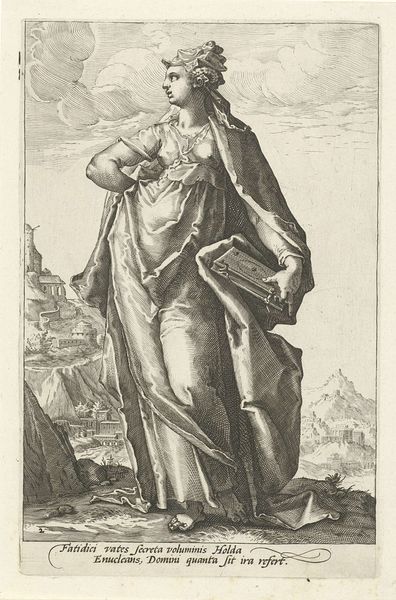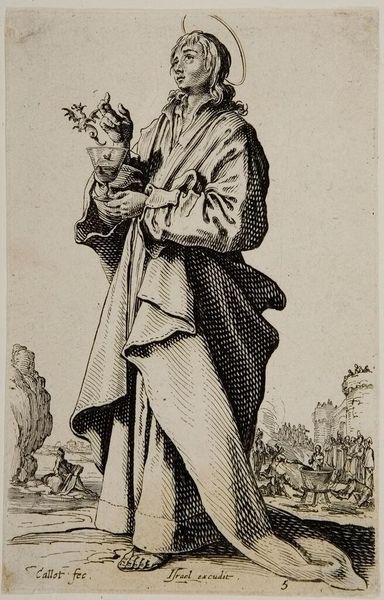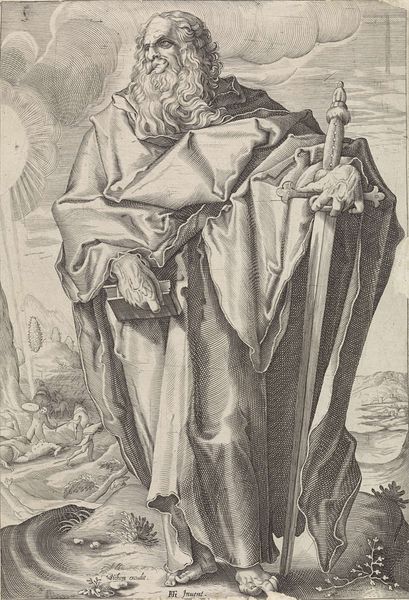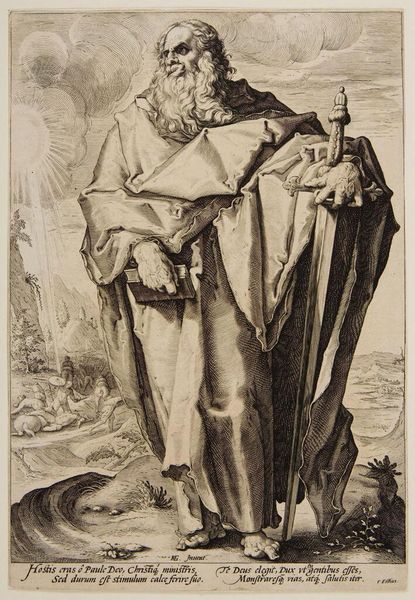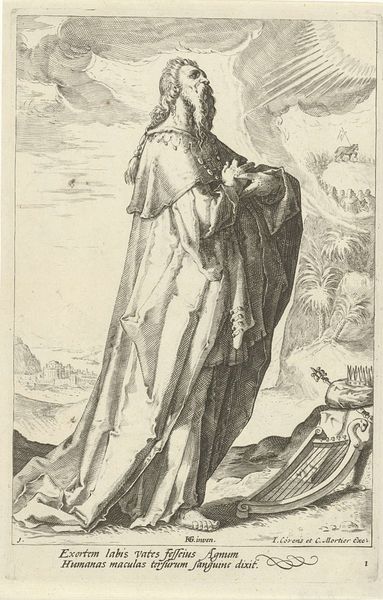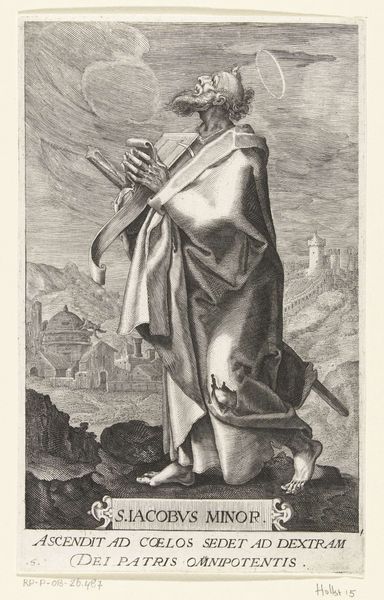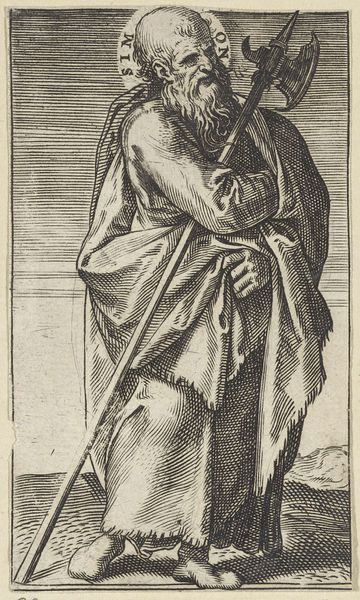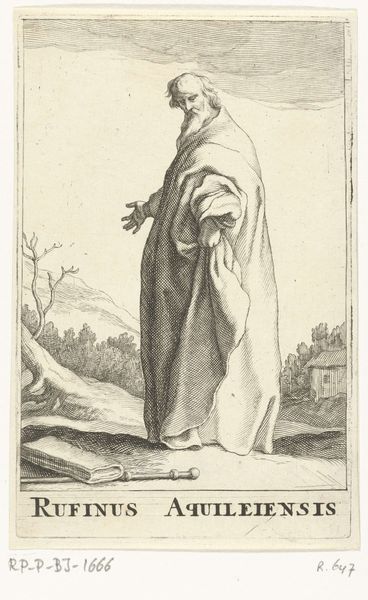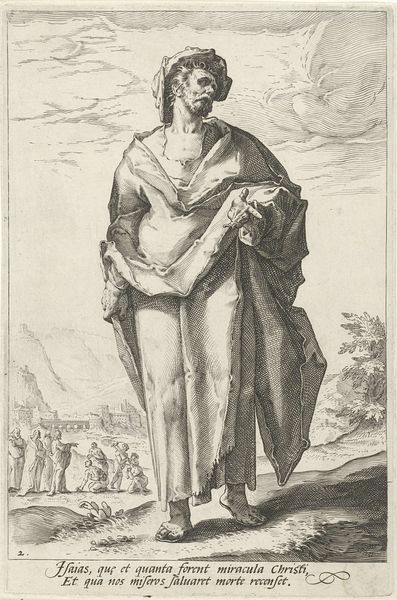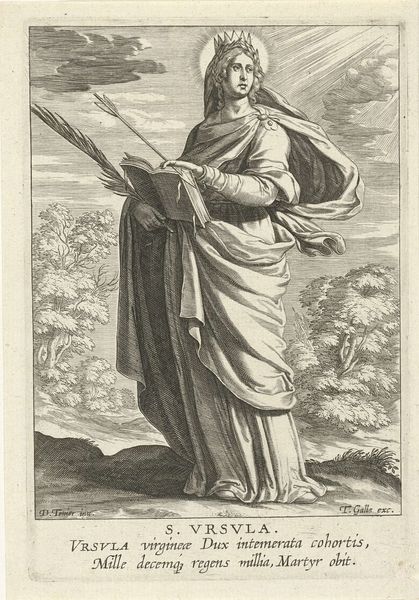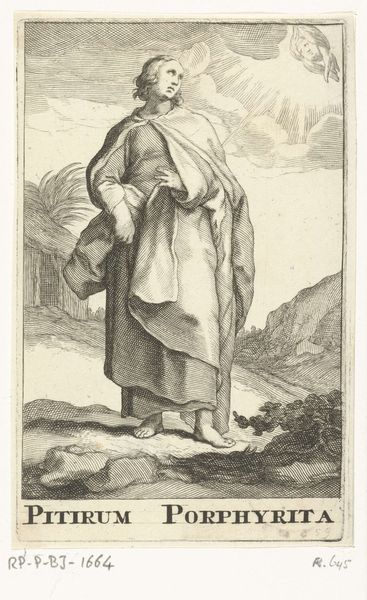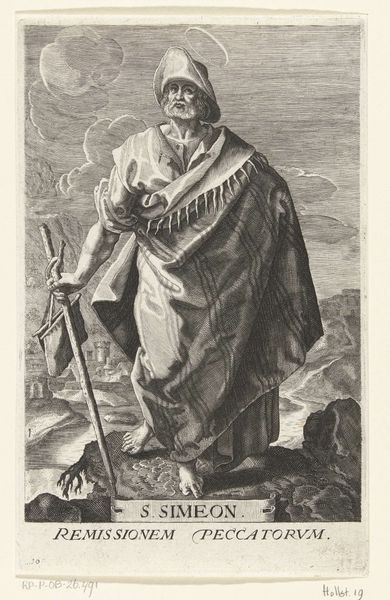
Dimensions: height 250 mm, width 165 mm
Copyright: Rijks Museum: Open Domain
Jacob Matham made this engraving of Jeremia in the Netherlands, sometime between the late 16th and early 17th centuries. Here, the prophet’s anguish, face upturned, expresses a culture of religious and political turmoil. The image makes meaning through contrasts. The heavens rain destruction, a fiery scourge and upturned pot, while the earth below is stable. Jeremiah stands between, a conduit for divine wrath. The Latin text at the bottom describes the scene, underscoring the prophet’s role as a messenger of doom. The Dutch Republic, newly formed, was in a state of religious reformation, and the role of religious imagery was hotly contested. Prints like this one, circulated widely, and fueled debates about the place of religion in public life. Historical research into the printmaking industry, religious movements, and the politics of the Dutch Republic can help us understand the important social function that art like this played at the time.
Comments
No comments
Be the first to comment and join the conversation on the ultimate creative platform.
